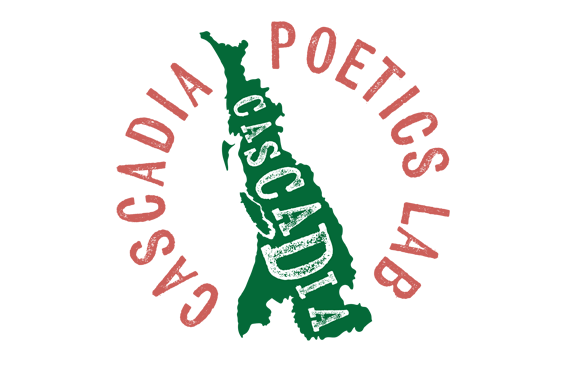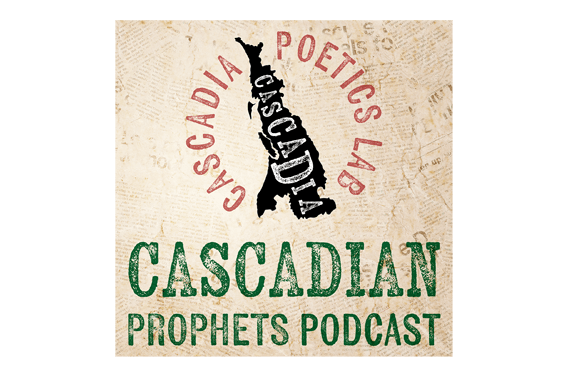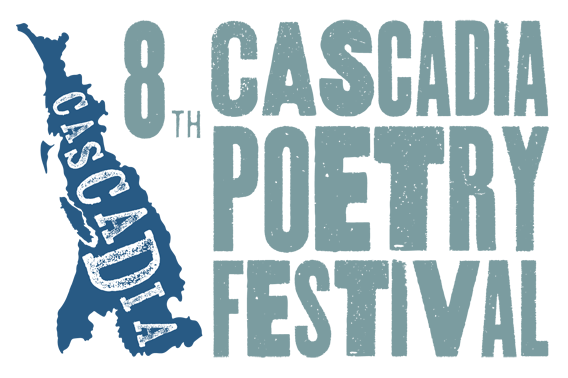Greg Bem Reviews Cascadian Zen Vol. I for Ravens Chronicle Press
By Greg Bem for Ravens Chronicle Press:
In Fall of 2023, the world was gifted with a new type of anthology, an immense type of anthology, and the first in a series of multiple anthologies covering, or attempting to cover, the awe-inducing undercurrent of the Cascadia Bioregion: Zen. The anthology in question is Cascadian Zen, Volume One, Bioregional Writings on Cascadia Here and Now, and it is a monumental work capable of serving many as a guide for the spiritual believers and practitioners who find themselves within the intersection of Cascadia, the poetic act, and Zen Buddhism. This first volume is the result of a years-long commitment to publishing an astounding number of diverse Cascadian voices, whose collective works span decades upon decades, and who identify in some way—big, small, or totally—with Zen.
Led by editors Paul E. Nelson, Jason M. Wirth, Adelia MacWilliam, with assistance from Theresa Whitehill, this is a project that is, quite frankly, impossible to summarize in a mere review. I sat with the book—a weighty, stone-like object—for multiple months across many Cascadian spaces and I read it and read it slowly. It was almost like scrying, or turning to the book when it was time, when reflection or expansion or reduction was needed. A new type of breath. A new type of reading. I attempted to absorb its contents, and eventually I was led to a vision of the text itself as a koan: a holistic mode of inquiry that required multiple types of participation—one of acceptance and one of letting go. My copy has over a hundred sticky notes flagging lines, insights, questions—all the wash of stuff that arose from my single, slow reading. It has transformed into a silly but beautiful tome, something that exists beyond itself, continues to grow, not to be let gone, even when set aside.
This was not my first experience with an anthology co-developed by Nelson: Make It True: Poetry from Cascadia (Leaf Press, 2015) and Make It True Meets Medusario (Pleasure Boat Studio Press, 2019) are relatively recent collections showcasing poets from Cascadia—and in the latter, also including voices inspired by the Latin American Neobarroco poets of the Medusario: Muestra de poesía latinoamericana anthology (Fondo de Cultura Econonómica, 1996). In each of these works, the Cascadians, whose poems and essays make up the body of the book, are matched by something greater than themselves: a bioregion that has stood long as a center for inquiry and acceptance. Acceptance of place. Acceptance of role. Acceptance of feature and nuance. A sort of optimistic mindfulness toward the center, toward what it is that draws us here. And “here” is worth considering for a moment. Googling “Cascadia” will show a wide variety of descriptions and visualizations, and it’s worth looking at the variations of definition and description. In each of them, I recommend noting how sprawling Cascadia truly is: from the Gulf of Alaska working southeast, along the coast all the way to the Cape Mendocino area and outward, stunningly, to Yellowstone and Wyoming, up through what is known as the Inland Northwest, everything west of the Continental Divide, and back up around through many parts of Canada. These descriptions are, of course, the colonial descriptions, and should be considered alongside indigenous place names as well.
All these anthologies attempt to bring together cohesion and connection; bring together commonalities of intent and purpose, of placement and vision, of why here and how here; in this bigness, this place of beauty and bountiful resource, and strange coalescence of peoples and interests. The connection by way of bioregional occupancy, and also bioregionalism: intentionality around being in that occupancy, and exploring (or professing) what that means. In all cases we find truth as we find truth in many parts of our common existence: through poetry. Through the act of the poem and the poetic expression, writers and readers alike can converge on the bioregional everyday. The nuances are felt. The differences are witnessed. The process of existing and coexisting are heightened and shared. The aforementioned Cascadian anthologies did indeed bring together many voices from Cascadia, but this anthology, Cascadian Zen, Volume One, is a significant step upward towards the peak of understanding Cascadian logos, ethos, and pathos: beyond the miscellaneous wonder that is the sheer number of poets residing and operating within Cascadia is the wondrous patterns of belief and practice that propel them and station them and keep them afloat.
The anthology is opened with an astute introduction from the poet Andrew Schelling, an offering that serves doubly as wayfinding and blessing. Schelling, alongside the editors, invites the reader into Zen and the historic context of Zen within Cascadia and along the West Coast. The editors then offer their own preface with “a Short User’s Guide,” a navigational tool that many other anthologies would benefit to emulate. Nelson, Wirth, MacWilliam instill the book with a sense of gentle exploration seemingly necessary for a book of this size.
Following this introductions are the central components of the anthology, organized under the following structure: the three “baskets” of The Buddha Way, Empty Bowl, and Original Mind. Each “basket” or partition gently allows for arrangement and division in a poetic space that is incredibly fluid and multifaceted. A book that is 400 pages, no matter how formless at its Zen core, benefits from the division.
The user’s guide contains an introductory definition to each segment of the whole, both in the current volume and future volumes: “The Buddha Way collects poems that explicitly evoke Buddhist themes or are aligned with figures who do” . . . “Empty Bowl is a legendary bioregional poetry and prose press founded in Western Washington in 1976 by Michael Daley and Bob Blair . . . Many of the authors in this basket have published with this press while others have not” . . . “Original Mind . . . is neo-primitive mind, thinking and speaking from the retrieval of its Indigenous roots and the practice of their wisdom.” The future volume will contain the following baskets, which is helpful for knowing what is and what is not in Volume One and what is to be in Volume II: Borders Without Binaries, Wilson’s Bowl, Issei Zen, and Storm Clouds.
The metaphor of the basket is humorous given the size of each: there are 19 voices in each of the three. Spliced across the collections of poems are several interviews, and across the book are visual works by a handful of artists. The book’s website offers a selection of the poets whose work is included: “Sam Hamill, Mary Norbert Körte, Diane di Prima, Michael McClure, Cedar Sigo, Jane Hirshfield, Joanne Kyger, Philip Whalen, Denise Levertov, Tess Gallagher, Brenda Hillman, José Kozer, Peter Levitt, Daphne Marlatt, Fred Wah, Meredith Quartermain, Jerry Martien, an essay by Thomas Hitoshi Pruiksma on Zen in the work of Sam Hamill, and others.” But it is important to recognize that none of these voices hold dominance, despite their fame or success as published and public figures. The book offers opportunities for joy, an ecstasy and entrancing through pathways, connections, and the shared language and the shared breath.
The book contains one epigraph that precedes the baskets: “For the protection of all beings in the bioregion of Cascadia” (page 1). The senses of duty, responsibility, Samaritanness ? Samaritanism swirl around the book. and regularly show their face. Cascadia is not just a spot on a map but a space of collectivity, of history, of shared action and commitment to place, ecology, and life as we know it. As such, this is a collection that feels very liminal: a space that is capable of activation just as much as a space of rest, of inner (and outer) peace.
While Cascadia Zen Volume One contains innumerous writings from across time, perspective, and voice, it also contains, at the very back, a small version of David D. McCloskey’s Ecoregions of Cascadia map. To visualize Cascadia’s world of watersheds and mountain ranges offers additional companionship and relational substance for a reader’s meditations and explorations.
Volume One was launched in September 2023, during the 7th Cascadia Poetry Festival, held in Seattle. The prolific literary festival, created and continued through the minds of Cascadia Poetics LAB, moves across spaces and venues throughout the Cascadia Bioregion. The 7th Festival brought together many of the voices featured in Cascadia Zen Volume One for a weekend of thoughtful and critical discussion, inquiry, and presentation, with many pieces from the book shared, including an intensive look at McCloskey’s map.
It is exciting to think of the future volumes and their arrival, to sit at home alongside the first book. Timelines shift and mystery remains. We wait, and reflect, and wait. In Winter 2024, a Deluxe Edition was released. Hand bound in cloth, with signatures from multiple contributors, the deluxe edition is limited to 26 numbered copies.









Mountains and rivers without end! Thank you for this beautiful review.